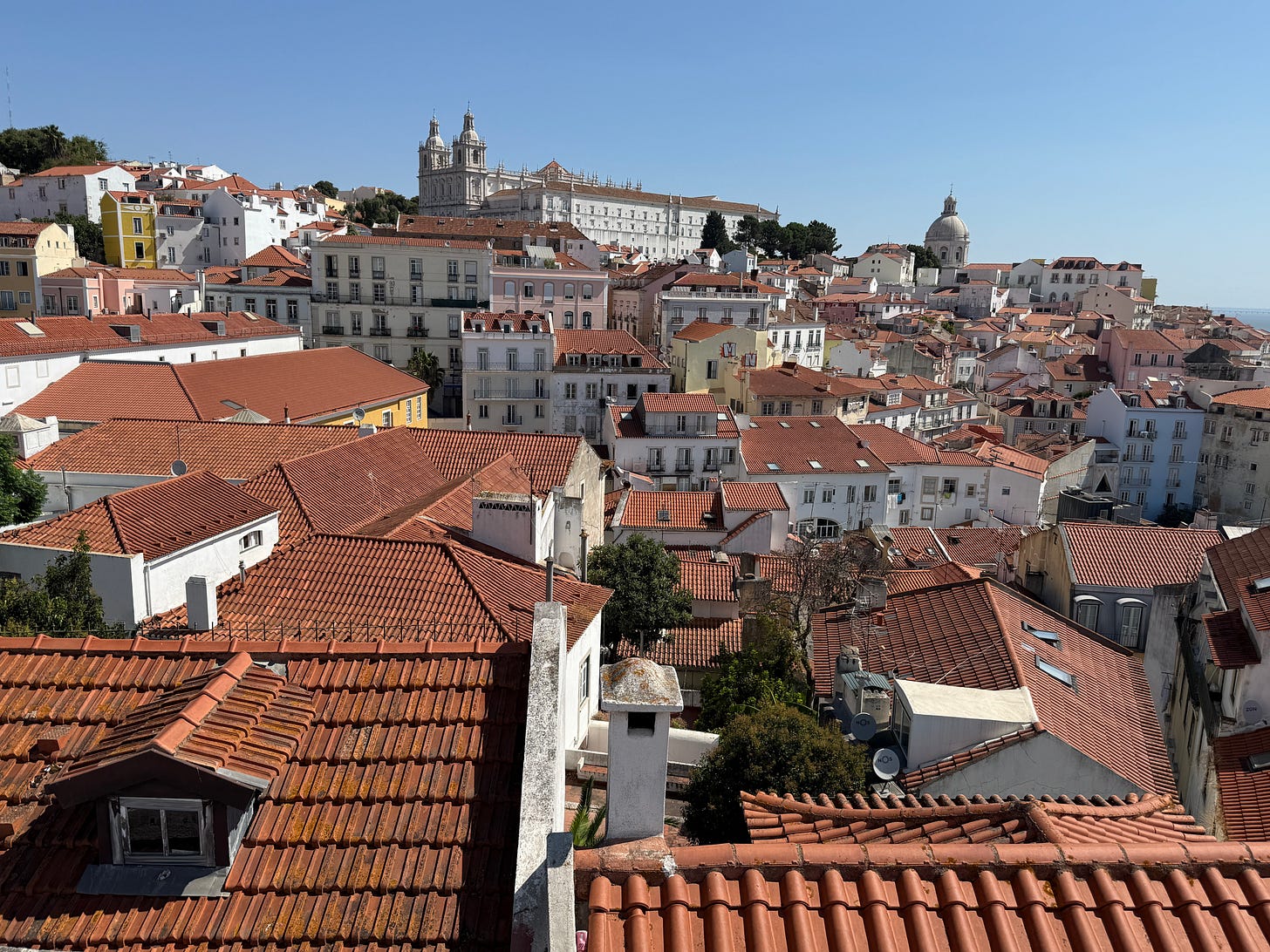What Does Our Home Architecture Tell Us About Where We Live?
A few observations from Greece, Portugal, and right here in the Bay Area
Hi, I just got back from a trip through Greece and Portugal. I’m still a little jetlagged, but the architecture I saw left such an impression, it inspired this post.
On my trip, I was genuinely astonished by the Greek white buildings. It is the first thing you notice. On the island I visited, every single building was white. The only color came from the doors and window trims. I found myself wondering why that was. Is it a rule?
Turns out, in many Cycladic islands, it actually is part of the building code. But also the white is not just for looks. It is a way to survive the heat. White buildings reflect sunlight, which helps keep the interiors cooler during scorching summers. What we see as beautiful is really just good design for the environment.
Then in Portugal, another visually striking place, it was the rooftops that caught my eye. Nearly every building had terracotta tile roofs, row after row in this sunbaked orange that glows at golden hour. It is especially striking at sunset. The whole city feels like it has been warmed from the top down.
At first, I figured it was a stylistic choice. Maybe a regulation to keep the city looking cohesive. But once again, it comes down to function. Clay tiles are durable, affordable, and great at keeping homes cool. They also hold up well in humid, coastal air. What looks charming is actually just smart.
That got me wondering. Do we have anything like that here in the Bay Area?
Does our architecture reflect where we live, our climate, our landscape, our quirks?
Turns out, it does. Maybe not in such an obvious way, but it is there. Once you start paying attention, you can see all the small ways our homes have adapted to fog, earthquakes, hills, and microclimates. And how those adaptations have become part of our visual identity, even if we do not think about them much.
Here are a few of the big ones:
Stucco and tile roofs
These show up across older neighborhoods in San Francisco, Oakland, and the Peninsula. While the style draws from Spanish and Mediterranean influence, the materials themselves are practical. Stucco handles fog and coastal moisture better than wood. Tile roofs are fire-resistant, mold-resistant, and low-maintenance. Together, they create a look that feels distinctly California and works for our climate.
Bay windows
Especially in San Francisco, these show up block after block. They were not added as decoration. They were designed to bring in light. In a city of narrow lots, and frequent fog, bay windows let natural light in from multiple directions. They make rooms feel brighter and more open. A subtle design choice that is now part of the city’s identity.
Victorian and Edwardian homes
Probably the most recognizable style in San Francisco, but they were not built to be charming. They were built quickly during a housing boom in the late 1800s and early 1900s. Still, there was smart design baked in: tall ceilings for airflow, transom windows for ventilation, raised foundations to help with moisture, and lighter-colored exteriors to brighten foggy blocks.
Mid-century modern
Throughout Berkeley and Oakland Hills, El Cerrito, Orinda, and even Marin and Palo Alto, mid-century homes were built to live with the land. They leaned into indoor-outdoor living, with large windows, internal courtyards, and open floor plans. These homes were designed to stay comfortable in places where a single day might shift from foggy morning to blazing sun and back again.
And of course, earthquake readiness
This does not show up in listing photos, but it is fundamental. Raised foundations, retrofitting, reinforced framing. These are the quiet features that make our homes resilient. We live on fault lines, and our homes are built with that reality in mind. It might not be romantic, but it is essential.
It was interesting to see how other parts of the world let geography shape their architecture so visibly. But it is happening here too, just a little more subtly.
And maybe that is the most Bay Area thing of all. Quiet, practical, a little weather-worn, and built to last.




Great post, I loved seeing how different building strategies addressed different climates when I visited northern Europe!